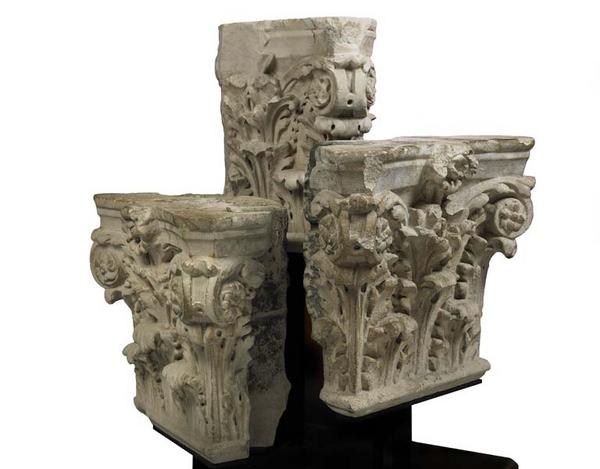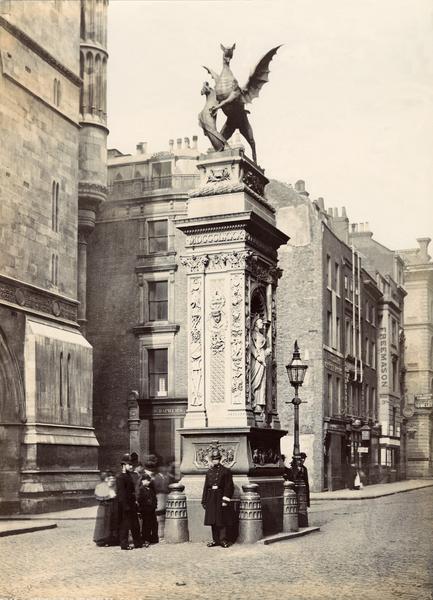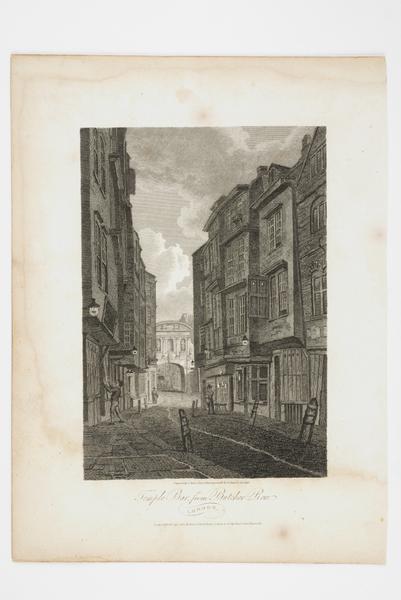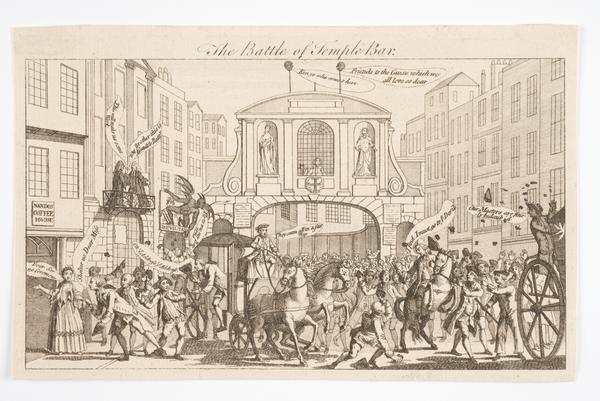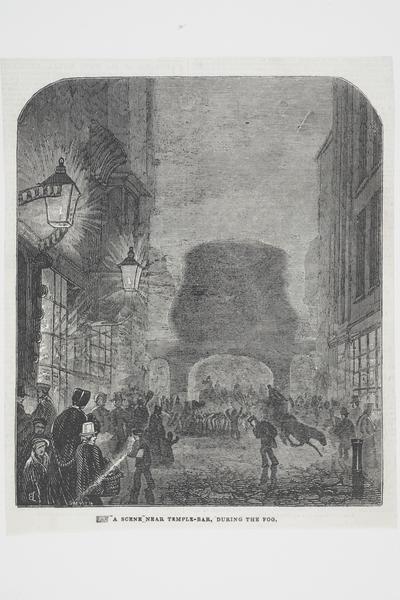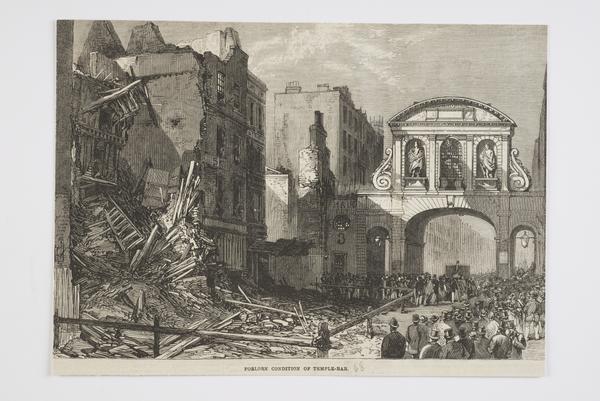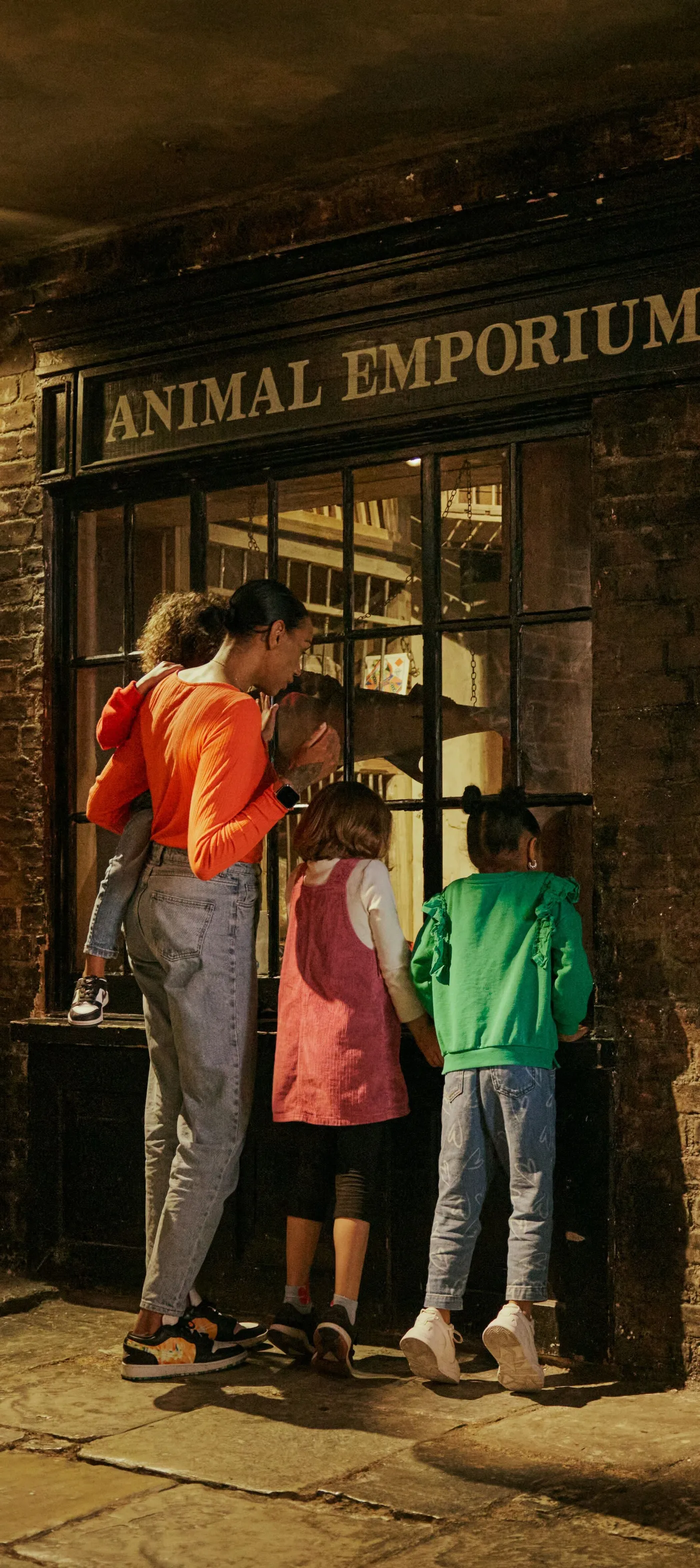Temple Bar: London’s last surviving gateway
Of the eight main entrances into the medieval walled City of London, only Temple Bar survives. First recorded in 1293, the historic gateway regulated trade and traffic coming into the City from the west. Its long history takes in royal pomp, political ceremonies and a brief spell outside the capital. Today, you can find the Christopher Wren-designed gateway in Paternoster Square.
Temple & St Paul’s, City of London
Since around 1293

When was the old Temple Bar built?
We first hear about a ‘bar’, or a gateway, between Fleet Street and the Strand in 1293. It was probably little more than a chain between wooden posts at first, but it came to be a meaningful division between the City of London and the City of Westminster. A wooden gate had been built by 1351 – even featuring a prison above it. It took its name from the Temple area, the centre for London’s lawyers at the time.

What were the gates of London?
Around 200 CE, the Romans built a defensive wall with six main gates around their London settlement. These gates were later known as Aldgate, Aldersgate, Bishopsgate, Cripplegate, Newgate and Ludgate. They remained an important feature of city life into the medieval period (1066–1540), used to control trade and traffic, collect taxes and display important information. Gateways like Temple Bar and Moorgate were added in this period. The wall and its gates were torn down in the 1700s – but the Bar was spared.

Christopher Wren rebuilds Temple Bar
In 1666, the Great Fire of London burned a path of destruction as far west as the Temple area. The old wooden gate survived, but Temple Bar still wasn’t in a good state. In 1672, King Charles II tasked influential architect Christopher Wren to rebuild it in valuable Portland stone. The new gate featured sculptures of the king and his ancestors Charles I, Queen Anne of Denmark and James I.

Temple Bar was a feature of royal and political ceremonies
Anne Boleyn, wife of Henry VIII, travelled through the freshly painted Temple Bar to her 1533 coronation. In 1588, Queen Elizabeth I led a procession through the City celebrating the defeat of the Spanish Armada. She stopped at the Bar and gave the lord mayor of London a pearl-encrusted sword, starting a centuries-long tradition where monarchs stopped here on state visits and received a sword. The gate was also dressed in black velvet for naval hero Horatio Nelson’s funeral procession in 1806.

Temple Bar’s dark history
In the 1600s and 1700s, heads and other body parts of people who’d been executed were displayed on Temple Bar as a warning to passersby. The first to meet this fate was Thomas Armstrong in 1683, who was executed for his role in the so-called Rye House Plot to assassinate Charles II. It’s thought his remains were boiled in salt before they were stuck onto Temple Bar to prevent birds eating them.

Why was Temple Bar dismantled?
In the 1800s, the City’s major roads struggled to cope with London’s increasing population. Temple Bar had become, according to one writer at the time, “a bone in the throat of Fleet Street”. The stone gateway was taken down in 1878 when Fleet Street was widened to ease congestion. This also helped make space for the new Royal Courts of Justice. You’ll find a tall monument topped with a dragon (or a rather scaly ‘griffin’) marking the gate’s original location today.

Where was Temple Bar rebuilt?
Thankfully, Temple Bar didn’t disappear for good. Each stone was numbered and taken down piece by piece, before being stored off nearby Farringdon Road. It was then bought by the socialite Valerie Meux and her wealthy brewer husband, Henry. They re-erected the Bar outside London on their estate in Cheshunt, Hertfordshire. Temple Bar stood there for around 100 years – a witness to Meux’s lavish parties and, rumour has it, a host to the future King Edward VII and Winston Churchill, who supposedly dined in the gateway’s upper room.

Temple Bar comes back to the City of London
By the mid-1900s, Temple Bar was in a sorry state. In 1976, hotelier and former lord mayor Hugh Wontner formed the Temple Bar Trust to rescue the run-down landmark and bring it back to the City. Eventually, in 2004, the gate was cleaned up and reconstructed in Paternoster Square, near Wren’s most famous Portland stone landmark, St Paul’s Cathedral.

